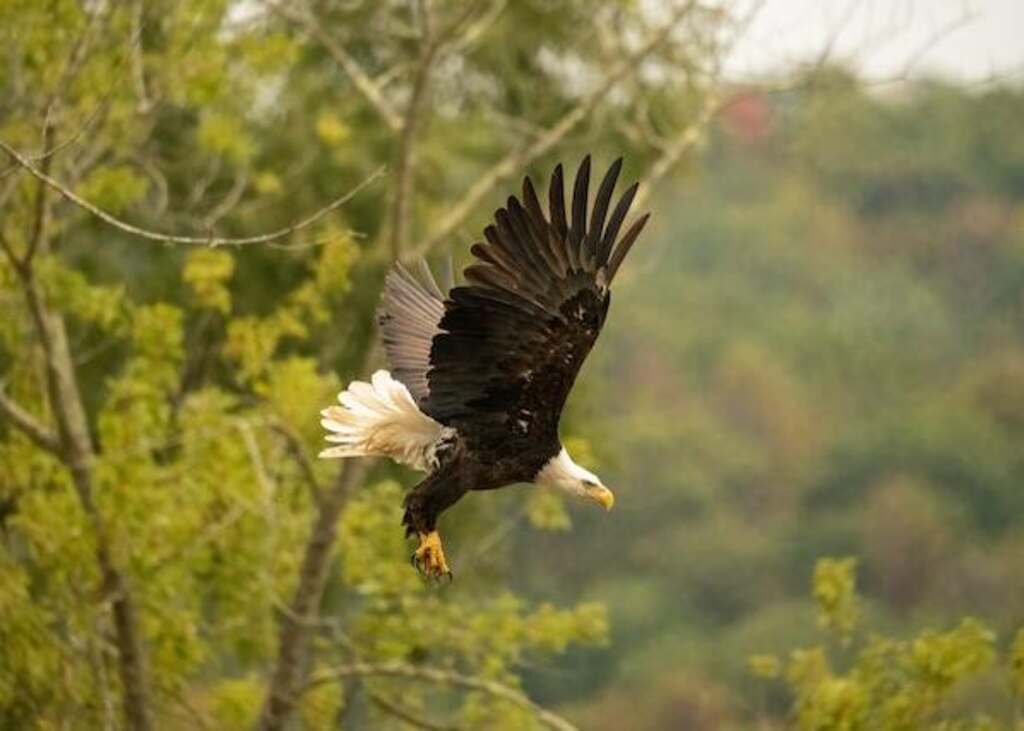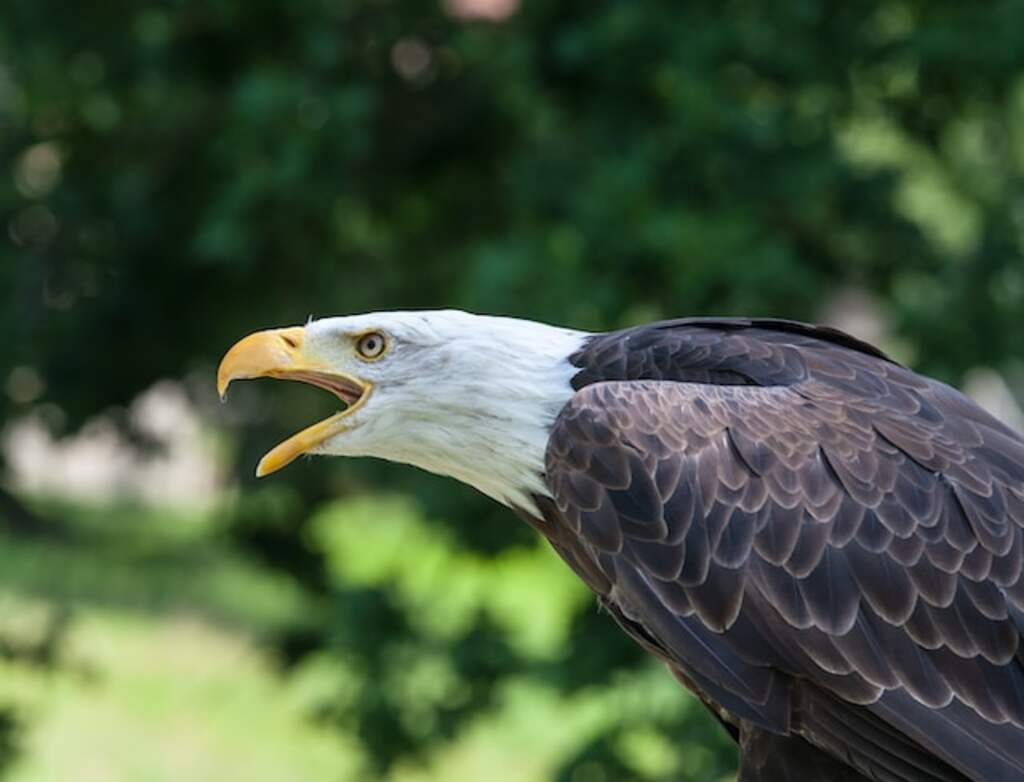Do Eagles Eat Crows? In the captivating realm of nature’s intricate tapestry, we ponder a curious question: do eagles indulge in feasts of crow?
Join us on an academic journey to explore the secrets of this avian dining dilemma. Discover the scientific insights, hunting tactics, and remarkable adaptations that unravel the enigma of eagle-crow interactions.
Get ready for an expedition filled with surprises and a deeper understanding of nature’s intricacies!
Table of Contents
- 1 Key Takeaways
- 2 An Overview of Eagle’s Diet
- 3 Eagle’s Preference for Small Mammals and Fish
- 4 Examination of Eagle’s Hunting Techniques
- 5 The Role of Carrion in an Eagle’s Diet
- 6 Rare Instances of Eagles Preying on Birds
- 7 Do Eagle Eat Crows
- 8 Study of Eagle-Crow Interactions in the Wild
- 9 Factors Influencing Eagle’s Food Choices
- 10 Insight into the Eagle’s Feeding Behavior
- 11 Discussion on the Scavenging Habits of Eagles
- 12 Frequently Asked Questions
- 13 Conclusion
- 14 Author
Key Takeaways
- Eagles have a diverse diet that includes fish, rodents, and birds like crows.
- Eagles occasionally prey on birds, such as crows, despite their preference for small mammals and fish.
- Understanding eagle’s feeding behavior sheds light on their ecological role and population maintenance.
- Inquiry into whether eagles consume crows provides insights into their dietary habits and hunting strategies.

An Overview of Eagle’s Diet
The dietary preferences of eagles encompass a diverse range of prey, with their diet consisting of various small to medium-sized animals such as fish, rodents, and birds, including crows.
Eagles are known for their nesting habits, building large nests in tall trees or on cliffs.
However, climate change has had an impact on the availability of their food sources, affecting the populations of fish and small mammals.
Consequently, eagles have shown a preference for small mammals and fish to compensate for this change.
Eagle’s Preference for Small Mammals and Fish
In examining the dietary habits of eagles, it becomes evident that their preference lies primarily with small mammals and fish. Eagles are known for their prowess in hunting and capturing their prey.
They have adapted various hunting techniques to ensure their successful catch, such as aerial hunting, perch hunting, and plunge diving.
These techniques allow eagles to efficiently locate and capture their preferred food sources. The examination of eagle’s hunting techniques will further shed light on their efficient hunting strategies.
Examination of Eagle’s Hunting Techniques
Examination of the hunting techniques employed by eagles reveals a well-orchestrated symphony of precision and skill, as they navigate the skies with the grace and precision of a seasoned conductor leading an orchestra.
Their hunting techniques involve a combination of aerial agility, keen eyesight, and powerful talons.
By utilizing these skills, eagles are able to spot prey from high altitudes, swiftly descend upon it, and capture it with their sharp talons.
These techniques enable eagles to secure their next meal effortlessly and efficiently. Transitioning to the subsequent section, the role of carrion in an eagle’s diet is worth exploring.
The Role of Carrion in an Eagle’s Diet
Carrion, a commonly overlooked food source, plays a vital role in the nutritional needs of eagles. The role of scavenging is crucial, as it allows eagles to obtain essential nutrients from decaying carcasses.
Despite being skilled hunters, eagles also rely on carrion to supplement their diet. However, the impact of eagles on the carrion population remains unclear and requires further investigation.
In rare instances, eagles may also prey on birds, which will be explored in the subsequent section.
Rare Instances of Eagles Preying on Birds
Rarely observed, eagles occasionally prey on various species of birds as part of their diet, demonstrating their ability to adapt and diversify their hunting strategies.
While eagles are primarily scavengers, they have been known to actively hunt birds such as crows.
This behavior is not common, but it highlights the opportunistic nature of eagles and their willingness to exploit different food sources.
Understanding these eagle-crow interactions in the wild requires a comprehensive study of their behavior and ecological dynamics.

Do Eagle Eat Crows
Yes, eagles are known to eat crows. While not their primary food source, eagles are opportunistic predators and may prey on crows when the opportunity arises. Factors such as size, availability, and competition play a role in their dietary choices.
Study of Eagle-Crow Interactions in the Wild
A comprehensive study of the ecological dynamics surrounding the interactions between eagles and crows in the wild provides valuable insights into the adaptable hunting strategies of these avian predators.
This research sheds light on the intricate predator-prey dynamics between eagles and crows, highlighting the complex nature of their interactions.
Understanding the intricate interplay between these two species can help elucidate the factors influencing eagle’s food choices, which will be discussed in the subsequent section.
Factors Influencing Eagle’s Food Choices
Factors such as habitat availability, prey abundance, and competition with other predators play pivotal roles in shaping the food choices of eagles in the wild.
These factors can greatly influence the dietary preferences of eagles, affecting the types of prey they target and consume.
The availability of suitable habitats and the abundance of prey species directly impact the eagles’ food options.
Furthermore, competition with other predators for limited resources can also influence their food choices.
Understanding these factors provides insight into the eagle’s feeding behavior and its ecological significance.
Insight into the Eagle’s Feeding Behavior
Insight into the feeding behavior of eagles can shed light on their ecological role and the dynamics of their food web interactions.
Research has shown that eagles have a diverse diet and are opportunistic scavengers. They are known to feed on a variety of prey, including fish, small mammals, and birds such as crows.
Eagle-crow interactions are complex and can vary depending on factors such as competition for food and habitat.
Understanding the scavenging habits of eagles is crucial for further discussion on their role in the ecosystem.
Discussion on the Scavenging Habits of Eagles
An understanding of the scavenging habits of eagles is essential for comprehending their ecological role and the dynamics of their food web interactions.
In regards to eagle-crow interactions, eagles have been observed to scavenge on carrion, including crows. This behavior can be attributed to the opportunistic nature of eagles, as they take advantage of readily available food sources.
Such scavenging behavior allows eagles to fulfill their dietary needs and maintain their population in the ecosystem.

Frequently Asked Questions
Do eagles eat crows?
Eagles and crows compete for food resources, and the eagle’s diet can be influenced by the crow population. The impact of crow abundance on eagle diet highlights the dynamics of interspecies competition in avian communities.
What factors influence an eagle’s food choices?
Factors influencing an eagle’s food choices include availability of prey species, habitat characteristics, and competition with other predators. The impact of habitat on an eagle’s diet can vary based on factors such as vegetation type and proximity to water bodies.
How do eagles interact with crows in the wild?
Eagle-crow interactions in the wild involve territorial disputes. Eagles may compete with crows for resources and defend their territories. Understanding these interactions is important for studying the dynamics of avian communities.
Do eagles prefer small mammals and fish over other types of food?
Eagles have a diverse diet, which includes small mammals and fish. Their hunting techniques, such as aerial diving and stooping, are well adapted for capturing these types of prey.
Are there any rare instances of eagles preying on birds?
Rare instances of eagles hunting songbirds, such as pigeons, have been documented. These occurrences, though infrequent, demonstrate the diverse feeding habits of eagles, showcasing their adaptability and opportunistic nature in pursuing various prey species.

Conclusion
In conclusion, the diet of eagles is primarily composed of small mammals and fish, with occasional instances of predation on birds. Eagles exhibit impressive hunting techniques and have a preference for fresh carrion.
Factors such as availability and competition influence their food choices.
Understanding the feeding behavior of eagles provides valuable insights into their ecological role.
However, it is worth noting that even the mighty eagle is not immune to the allure of a free meal, as they occasionally scavenge for food.
As the saying goes, ‘Hunger is the best sauce,’ reminding us of the relentless pursuit of survival in the animal kingdom.


